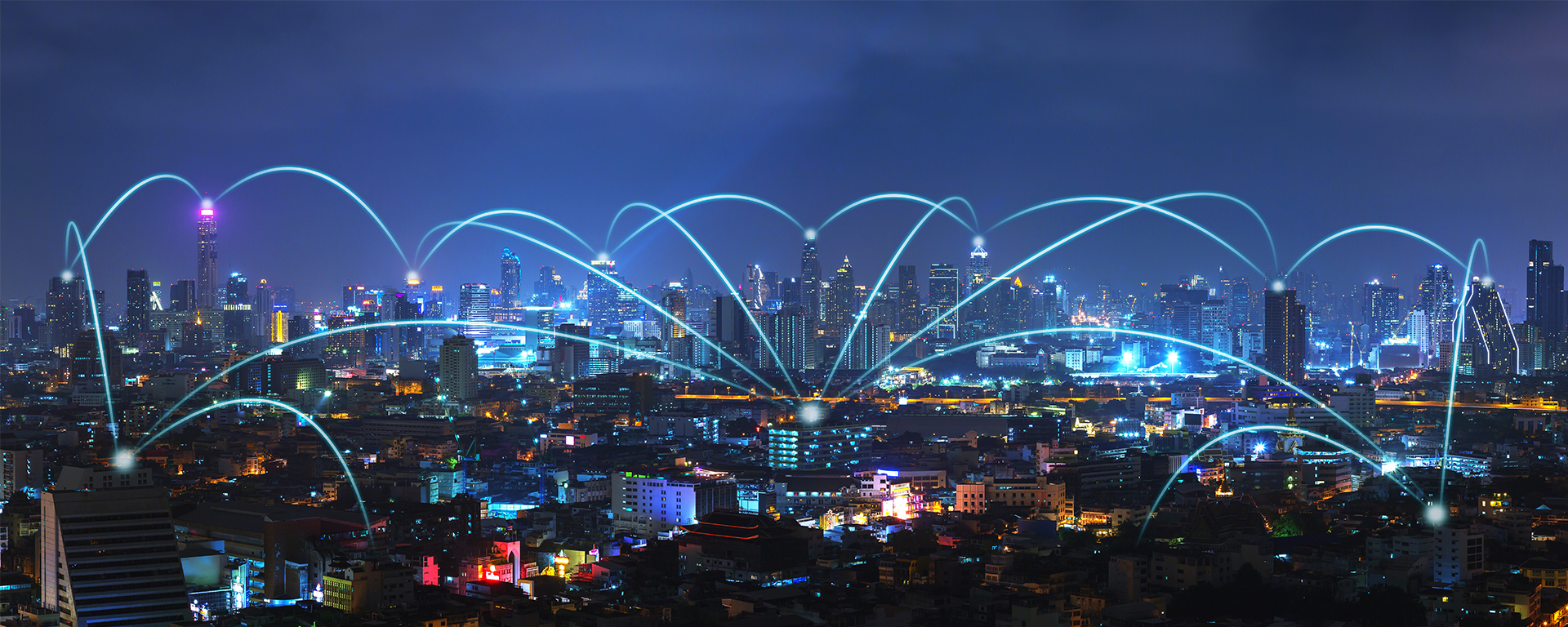The cities of the future look very promising on paper: more efficient, more resource-friendly, more sustainable, and offering a better quality of life. Whether “smart” cities will achieve those goals depends largely on public acceptance of new technologies – and the quality of the IT infrastructure.
BY MIRKO BESCH
“Our goal is to find viable solutions to make cities smart, sustainable, and livable in the future.” ALANUS VON RADECKI, PROJECT MANAGER
In medieval Europe, the city was the symbol of freedom. Now, most cities are battling with congestion. According to the United Nations, by the year 2050 around 70 percent of the world’s 9.7 billion inhabitants will live in metropolitan areas or “megacities” of more than 10 million people. Unless corrective measures are taken, this trend presents some major threats. This is one reason why urban planners are joining with public and private bodies to create the future of urban living: the smart city.
Most city dwellers, however, are still ambivalent about the smart environment. A study by the VDE (Association for Electrical, Electronic & Information Technologies) concludes that:
- 60 percent of German citizens expect smart cities to provide a better quality of life, more efficient use of resources, and better environmental protection.
- However, 62 percent rejected the idea of using smart household appliances, e.g., cookers, refrigerators, and washing machines.
Concerns about privacy and the possible misuse of data are, it seems, too great. Yet, as VDE Chairman Hans Heinz Zimmer has pointed out, the benefits of smart living are obvious: more comfort, lower energy costs, and greater protection against burglary and fire – all benefits that apply equally in the smart home and the smart city as a whole.
At present, researchers are working on a number of smart cities and neighborhoods. One example is the EU-funded “Triangulum” project headed by Fraunhofer IAO in Stuttgart.“Our goal is to find viable solutions to make cities smart, sustainable, and livable in the future”, explains project manager Alanus von Radecki. “To achieve this, we’re implementing pioneering concepts for sustainable energy, mobility, and information technology, initially in three selected cities – Manchester, Eindhoven, and Stavanger.”The Corridor Manchester project in the UK, for example, is turning an urban arterial route into a “smart quarter” that will increasingly cater to electric vehicles, bicycles, and the city’s electric tram system.
South Korea is already a few steps further down this road and is creating the most advanced municipality in the world.
Songdo International Business District is a totally new development next to the city of Incheon, some 35 miles southwest of the capital, Seoul. It is designed to house around 70,000 people and will also offer 300,000 workplaces. Every corner of the city as well as key areas of buildings are under constant video surveillance, while sensors and chips record the patterns of people’s movements. All of these systems are interconnected, of course. Any attempted break-in is immediately detected and reported to the municipal control center, which is the collection point for all information.
This wall-to-wall surveillance also has some drawbacks, of course. Every resident is under constant observation and there is always the risk that data could be misused. Yet for South Koreans, this does not appear to be a major problem. Internet activist Oh Byoung-il gave a possible explanation to the Austrian newspaper Der Standard: “We have had to endure a long period of dictatorship. Koreans are used to being monitored.”
The city of Songdo also scores highly in areas such as environmental protection and sustainability. Compared with conventional cities, Songdo will save up to 30 percent on energy through measures like intelligent street lighting, which detects when it is actually required. The traffic light system adapts to current traffic levels, thereby reducing congestion. And conventional waste-disposal methods are replaced by an underground system, which transports waste directly to the processing facility.
The basis for this functionality is the complete integration of smart home technology via a single Internet protocol (IP)-based network.
Developed by Cisco, the solution incorporates many different systems, including air conditioning, heating, fire protection, and ventilation. It responds in real time as people enter and leave rooms, automatically adjusting the heating and lighting to bring down household and business costs.
According to author Michael Jaekel, technological infrastructure has a key role to play in all smart city concepts. In his book Smart City wird Realität (The Smart City Becomes Reality), Jaekel describes how transnational corporations, such as IBM, Siemens, and Cisco, are the driving partners in many smart city initiatives.
The common goal of all these concepts is to make cities more efficient, resource-friendly, sustainable, and livable through the use of smart infrastructure.
The road to that reality is tough, however, requiring billions of dollars to redevelop urban infrastructure. Global investment is expected to reach $108 billion by 2020 according to Pike Research, while Frost & Sullivan estimates the global market potential to be around $1.5 trillion during the same period. As the Brazilian architect Oscar Niemeyer once said about the capital city, Brasilia, in whose design he was instrumental: “You may like it or you may not, but you’ll not be able to say you’ve ever seen something like it before.” The same may well apply to Songdo in South Korea and other smart cities of the future.
Related blog posts you may also be intersted in:
From Smart City to Smart Country
A Smart Nation Needs an Intelligent Network
